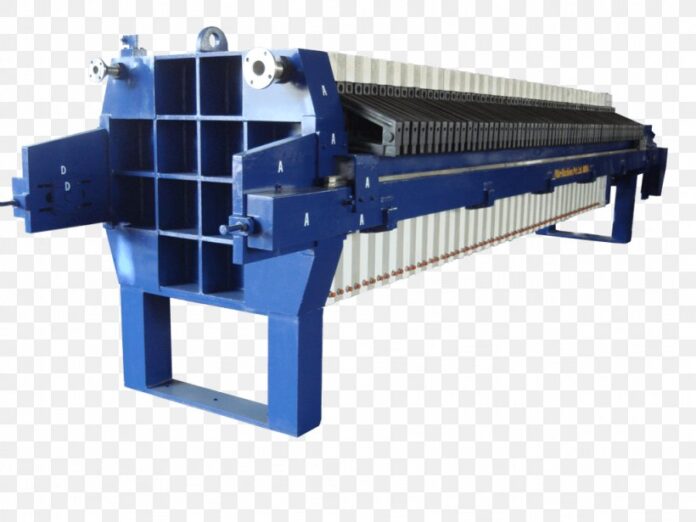Using filter press machines can be quite tricky, especially if you’re using them to process anything but water. This 5-step guide will teach you how to use these machines efficiently and safely, which will benefit your business greatly over time. This guide assumes that you are using membrane filter plates in your filter press machines, so if you’re using paper or some other type of filter plate, make sure to adjust the instructions accordingly. If you have any further questions about how to operate your filter press machine, please don’t hesitate to contact the manufacturer of your machine!
What Is A Filter Press Machine?
A filter press machine is a machine that uses a series of filters to remove impurities from a liquid. The machine has a series of filter plates, each with a series of holes in it. The liquid is pumped into the filter press and flows through the holes in the filter plates. As the liquid flows through the filter plates, the impurities are removed from the liquid and collected on the filter cloths. The clean water then moves out of the bottom of the filter plate and onto an outlet hose.
There are two types of filter presses: a pressure type and an overflow type.
The pressure type of filter press relies on applying pressure to force the liquid through the hole in each plate as they move up towards a stack. These machines have vertical tanks for storing water or other liquids that have been filtered by this process.
An overflow type works by siphoning off some amount of fluid from one tank or container over another tank below it, causing flow. These machines do not use tanks so they can be compact and easy to store without taking up much space at all.
How Does It Work?
A filter press is a machine that uses a pump to force liquid through a cloth filter, separating the solid and liquid components. The first step in using a filter press is a selection of the proper filter cloth for your application. Filter cloth selection is based on the type of liquid being filtered and the desired level of filtration. Once the proper filter cloth has been selected, it is installed on the filter press and secured in place. The next step is to add the liquid to be filtered into the feed chamber of the filter press. The pump is then turned on and starts forcing the liquid through the filter cloth, leaving the solid particles behind. As the filtering process continues, more solids are collected on top of the filter cloth, which decreases the flow rate of liquid through the machine.
What Are The Benefits Of Using Filter Press Machines?
Filter press machines offer a variety of benefits, including the ability to recycle materials, save on costs, and reduce environmental impact. Additionally, filter press machines can help improve product quality and extend the life of your equipment. The key to maximizing these benefits is proper filter cloth selection. When selecting your filter cloths, consider three important factors: material type, fibre count, and mesh size. Below you will find an overview of what each factor means and how it impacts filtration. As mentioned earlier, material type refers to whether or not the cloth is woven or nonwoven. Nonwoven materials are more rigid than wovens which allow for less contact between fibres. With nonwoven filters, there are typically two different types: polyester fabric or polyester synthetic media. Synthetic media provide more surface area per square inch and are more likely to collect particles in both coarse and fine pores whereas polyester fabric provides more depth in finer pores with a lower risk of clogging when working with viscous liquids like paints or pesticides.
Fiber count refers to the number of individual threads per square inch of cloth; higher numbers result in better filtration capabilities because more fibers have a chance of capturing contaminants as they pass through.
How Do You Use Them In Your Diurnal Life?
1. Always make sure the filter press is properly rated for the application and that all safety devices are in place and functioning correctly.
2. Pre-coat the filter plates with a filter aid before starting the machine to help prevent premature clogging of the filter media.
3. Slowly add the slurry to be filtered into the hopper, making sure not to overload the machine and cause a spill.
4. Once all of the slurry has been added, turn on the pump and begin filtering.
5. When the desired filtration time has been reached, stop the pump and open the discharge valve to begin draining the filtered cake from the plates.
6. Once all of the cake has been discharged, close the valve and turn off the pump before beginning to clean out the machine.
How Should You Choose A Filter Press Machine?
Filter Press Manufacturers In India come in a variety of sizes and types, so it’s important to choose the right one for your needs.
1. The size of the filter press machine: You’ll need to choose a machine that is large enough to accommodate the amount of material you’ll be processing.
2. The type of filter press machine: There are two main types of filter press machines, plate and frame and recessed plate. Plate and frame machines are typically used for smaller batch sizes, while recessed plate machines are better suited for larger batch sizes.
3. The material you’ll be filtering: The type of material you’ll be filtering will dictate the type of filter press machine you need.





![Best Social Media Marketing Name Ideas to Attract [2024] Social Media Marketing Names in 2024](https://gonobuddy.com/wp-content/uploads/2024/03/Top-100-Creative-Social-Media-Marketing-Names-in-2024-218x150.jpeg)







